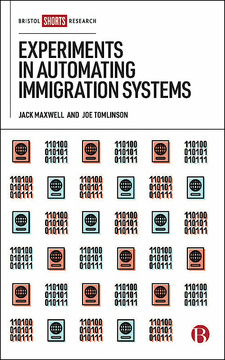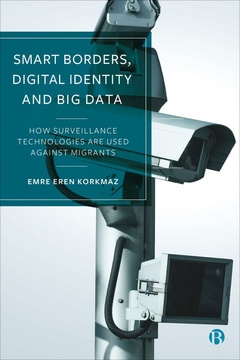The Digital Transformation of the European Border Regime
The Powers and Perils of Imagining Future Borders
By Paul Trauttmansdorff
Published
May 30, 2024Page count
192 pagesISBN
978-1529235203Dimensions
234 x 156 mmImprint
Bristol University PressPublished
May 30, 2024Page count
192 pagesISBN
978-1529235210Dimensions
234 x 156 mmImprint
Bristol University PressPublished
May 30, 2024Page count
192 pagesISBN
978-1529235210Dimensions
234 x 156 mmImprint
Bristol University PressThis book offers an in-depth investigation into the digitisation processes of Europe’s border regime. It shows how sociotechnical imaginations of future borders drive forward the expansion of databases in the European governance of mobility.
With a focus on the European Union Agency eu-LISA, one of the most significant and rapidly advancing actors in the digital border regime, the book serves as a gateway to understanding the key agents, visions, technologies and practices at work.
Asking broader questions about exclusion, discrimination, violence and mobility rights, this is an original contribution to our understanding of future borders in Europe.
“Through a multi-sited exploration of a little-known European agency, eu-LISA, Paul Trauttmansdorff’s book offers novel insights and raises critical questions about the sociotechnical imaginaries and infrastructures that shape Europe’s borders today.” Claudia Aradau, King’s College London
“Trauttmansdorff provides an outstanding analysis of imaginaries for Europe’s future and how they intersect with the erection of digital databases at the external borders. A must-read!” Matthias Leese, ETH Zurich
Paul Trauttmansdorff is Postdoctoral Researcher at the School of Social Sciences and Technology at the Technical University of Munich.
1. Introduction
First Interlude: Doing Research From Within The Border Regime
2. The Imaginary of Digital Transformation
Second Interlude: Three Empirical Vignettes
3. Assembling a Fractional Europe
Third Interlude: Another Vignette – The Golden Age?
4. Crafting the Epistemology of Smart Borders
5. Interoperability: Making a New Policy Fiction
6. Justification, Techno-Determinism, and Sanitized Realities: The Perils of Imagining Future Borders
7. Coda
Appendices
References












